AI Trends of 2025: Explore Top AI Market Trends & Adoption Statistics

David Pawlan
Co-Founder
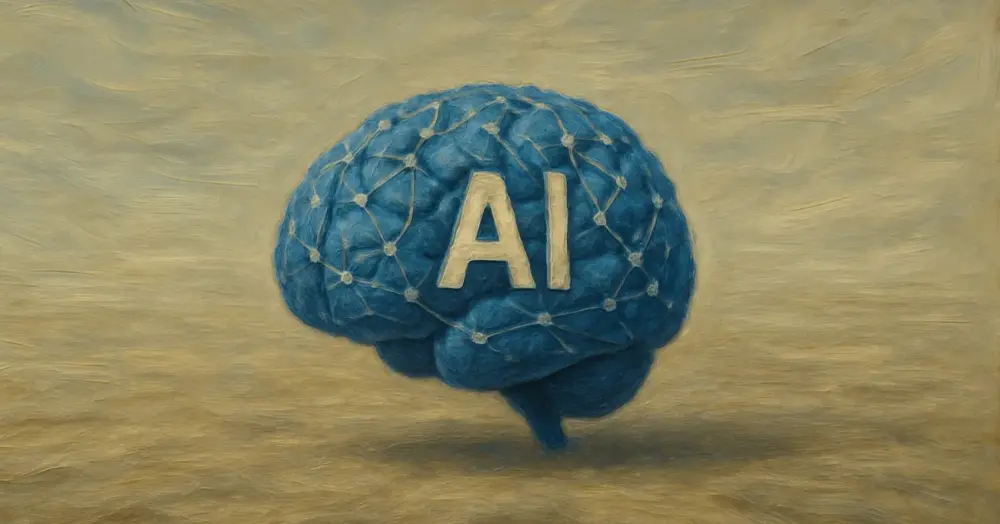
Share to AI
Ask AI to summarize and analyze this article. Click any AI platform below to open with a pre-filled prompt.
In 2025, we’ve come a long way since the emergence of artificial intelligence. No longer just a tool for Fortune 500 companies, 50% of small businesses are already implementing AI in mission-critical processes, according to PayPal. This growing adoption rate is thanks to AI trends making artificial intelligence more accessible and practical for businesses of all sizes.
At Aloa, we are at the forefront of next-gen artificial intelligence software development and have firsthand experience in how these trends are reshaping AI adoption. Whether you’re at a tech company or not, it’s important to understand how these technological advancements impact your industry as well as your competition. You can then deploy AI in a smart way across operations, products, and teams.
In this article, we will analyze the most significant AI market trends shaping 2025, such as:
- Advanced AI models and large language models with enhanced reasoning capabilities
- Autonomous agents transforming workflows
- Integration of AI technologies in everyday productivity tools
- Sustainable and responsible AI development
- AI-powered scientific breakthroughs
Let’s dive in.
AI Models Will Become More Capable and Useful
One of the most impactful AI trends of 2025 is an unprecedented boost in reasoning abilities. This is transforming a wide array of industries, but is gaining particular popularity as an enhancement to business decision-making. According to Microsoft, generative AI usage has jumped from 55% to 75% among business leaders.
This huge uptick in the adoption of AI is happening for good reason. New frontier model development is achieving problem-solving breakthroughs at an astonishing rate. To list a few:
- Claude 4 Opus: Dominates software engineering benchmarks with 72.5% accuracy on SWE-bench, enabling autonomous navigation and modification of complex codebases with minimal human intervention.
- Gemini 2.5 Pro: Achieves 18.8% accuracy on Humanity's Last Exam (highest among all tested models) with a 1 million token context window and 84.8% accuracy on VideoMME for video understanding.
- OpenAI's o3: Reaches 91.6% on AIME 2024, approaching top human mathematician performance through chain-of-thought processing that recognizes mistakes and adapts strategies.
- Microsoft Phi-4: Outperforms GPT-4o on mathematical reasoning with just 14 billion parameters, proving efficiency doesn't require massive scale.
- GPT-4.1 family: Achieves 90.2% accuracy on MMLU while powering Microsoft 365 Copilot across nearly 70% of Fortune 500 companies.
Agents Will Change the Shape of Work
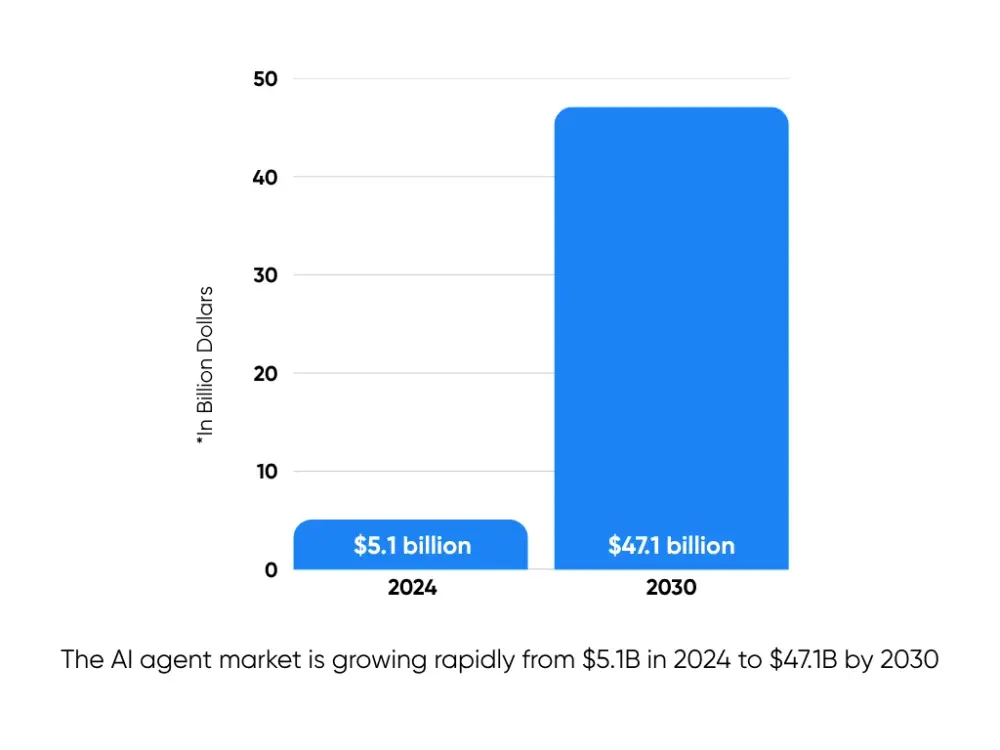
Autonomous AI agents are becoming a reality, fundamentally reshaping how work is done across various industries. Unlike traditional generative AI that responds to prompts or analyzes data, AI virtual assistants use deep learning to independently plan and make decisions, achieving goals without human oversight.
The AI agent sector is experiencing rapid growth in the global artificial intelligence market, from $5.1 billion in 2024 to a projected $47.1 billion by 2030.
This high demand is due to AI agents offering concrete business value rather than speculative potential. These intelligent systems handle complex, multi-step workflows autonomously, from scheduling and delegation to full operational management, representing a shift from task automation to comprehensive process orchestration.
Opportunities for Workflow Automation
AI agents and improved machine learning are creating unprecedented opportunities for business transformation through autonomous operations:
- Salesforce Agentforce: Deploys autonomous agents for sales, service, finance, and supply chain operations across websites, mobile apps, WhatsApp, and Slack, with version 2.0 launched in February 2025.
- LinkedIn's SQL Bot: Built on LangChain and LangGraph, enables employees across all functions to query databases using natural language, democratizing data access without technical expertise.
- Capital One's Multi-Agent Systems: Mirror company functions with specialized agents for risk evaluation, auditing, and loan processing, each working collaboratively within their domain.
- Enterprise Workflow Orchestration: Modern agents use predictive analytics to handle scheduling conflicts, delegate tasks based on capacity, manage procurement workflows, and conduct preliminary financial analysis.
- Process Evolution: Shift from human-centric workflows with AI assistance to AI-centric workflows with human oversight for strategic decisions.
Challenges in Agent Implementation
Despite promising opportunities, organizations face significant hurdles in agent deployment:
- Integration Complexity: Connecting agents with existing enterprise systems, databases, and workflows requires substantial technical infrastructure and API development.
- Quality Control: Ensuring agent decisions maintain accuracy and consistency across complex business processes without human verification at every step.
- Security Concerns: Managing data access, permissions, and potential vulnerabilities when agents operate autonomously across sensitive business functions.
- Change Management: Retraining workforce to collaborate with AI-centric processes while maintaining human oversight for strategic decision-making.
- Scalability Costs: Balancing the expense of sophisticated agent systems against measurable ROI, particularly for smaller organizations with limited technical resources.
AI Integration in Everyday Life
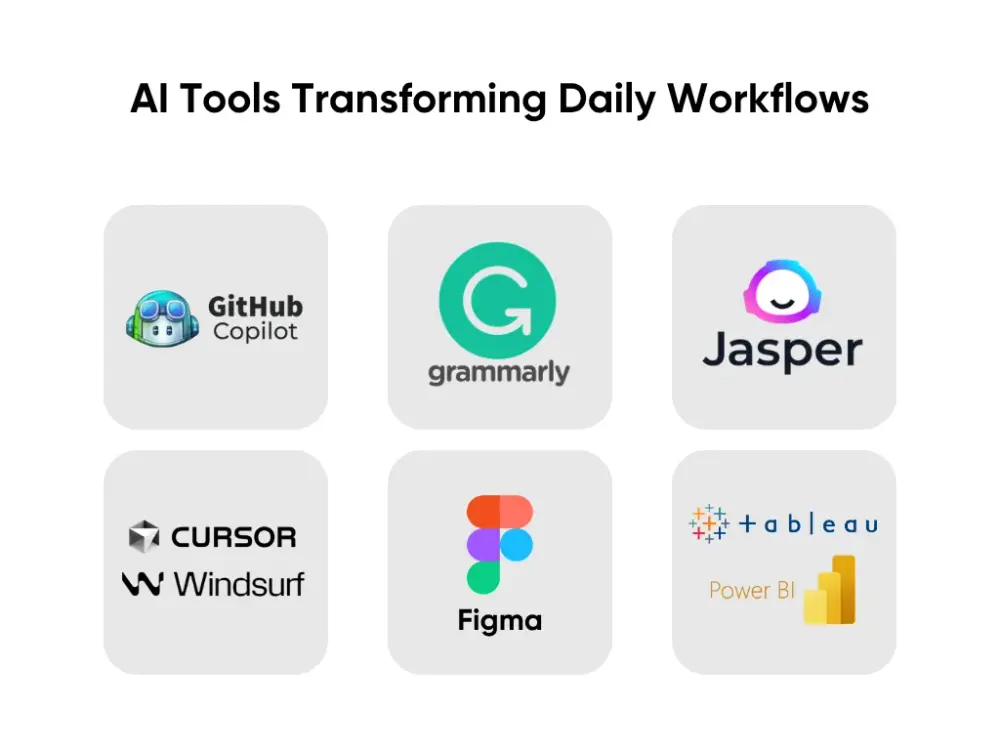
With modern AI productivity tools, sorting through emails, scheduling meetings, and other tasks that used to eat up your day are automatically handled in the background. This leads to time savings of up to 2 hours and 15 minutes daily, freeing up a significant chunk of the day for more important high-level work. Trust in these AI helpers is at an all-time high. 82% of small businesses now believe that AI will be essential to help them navigate today’s business landscape. That’s all thanks to fast, accurate results from tools like these:
- GitHub Copilot: Transforms software development by auto-completing code and suggesting entire functions, enabling developers to complete tasks 56% faster. This AI pair programmer understands context across multiple files, fundamentally changing how teams build applications. Accenture reports that 90% of developers felt more fulfilled with their job working with Copilot.
- Notion AI: Combines natural language processing with knowledge management, analyzing customer data for business insights while automating content creation. Teams use it to summarize meetings, generate reports, and extract actionable insights from documentation. Companies have found that Notion is particularly great for onboarding, answering 10-20 new employee questions daily.
- Microsoft 365 Copilot: Integrates AI across Word, Excel, PowerPoint, and Teams to automate routine tasks. It drafts emails, creates presentations from prompts, analyzes spreadsheet data, and summarizes meetings. From its introduction in 2023, workers have found Microsoft 365 Copilot irreplaceable: 77% said they don’t want to go back to working without it.
- Claude and ChatGPT Enterprise: Foundation models like these enable hands-free business operations through advanced language models that handle everything from customer service to strategic analysis. This leads to remarkable boosts in customer experience. Klarna, for example, was able to reduce customer support volume by 66% percent using AI assistants like Claude and ChatGPT.
- Grammarly Business: Serves 30 million daily users across 500,000+ apps with AI-powered writing assistance and content generation. Beyond grammar checking, it ensures brand consistency, improves clarity, and adapts tone for different audiences. This has proven critical for maintaining professional communications at scale.
Resource Efficiency and Sustainability in AI
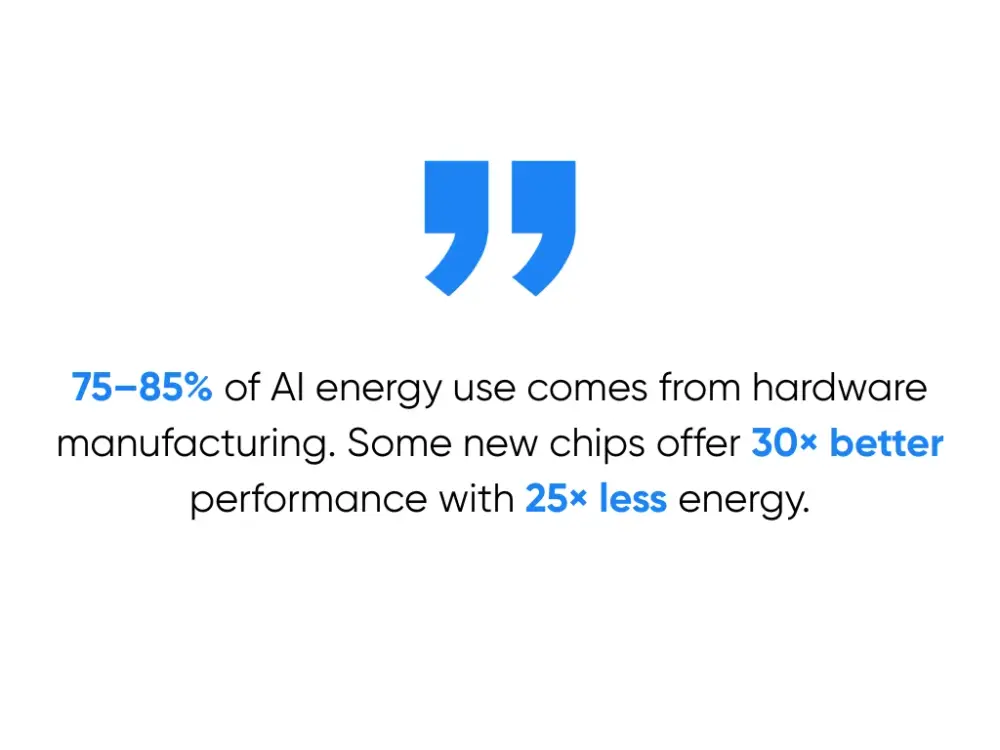
Approximately 75-85% of AI energy consumption is attributed to hardware manufacturing. The rapid increase in AI usage inevitably pushes more manufacturing of AI-capable chips, but we are starting to see significant cost savings on the software side of things:
- Microsoft: Has implemented carbon-aware computing across multiple products. Windows 11 now schedules updates during periods when the electrical grid uses more renewable energy sources, while Azure's carbon optimization features allow developers to shift workloads to regions with cleaner energy. The company's new API provides carbon forecasts to developers, enabling them to schedule compute-intensive tasks during low-carbon periods.
- Google: Pioneered location-based carbon-aware computing by shifting flexible tasks between data centers based on renewable energy availability. Their system uses day-ahead predictions of grid carbon intensity to move computing workloads globally, prioritizing regions with abundant wind or solar power while maintaining service quality.
- Energy Web: Launched an open-source Carbon-Aware Nomination system that automatically routes decentralized computing tasks to the greenest available nodes. This blockchain-based approach creates verifiable ESG reports and can reduce emissions by up to 40% for batch processing jobs.
- The Green Algorithms Initiative: Promotes sustainable coding practices that can reduce computing energy consumption by 30-50% through optimized data structures and adaptive algorithms.
Responsible AI Development
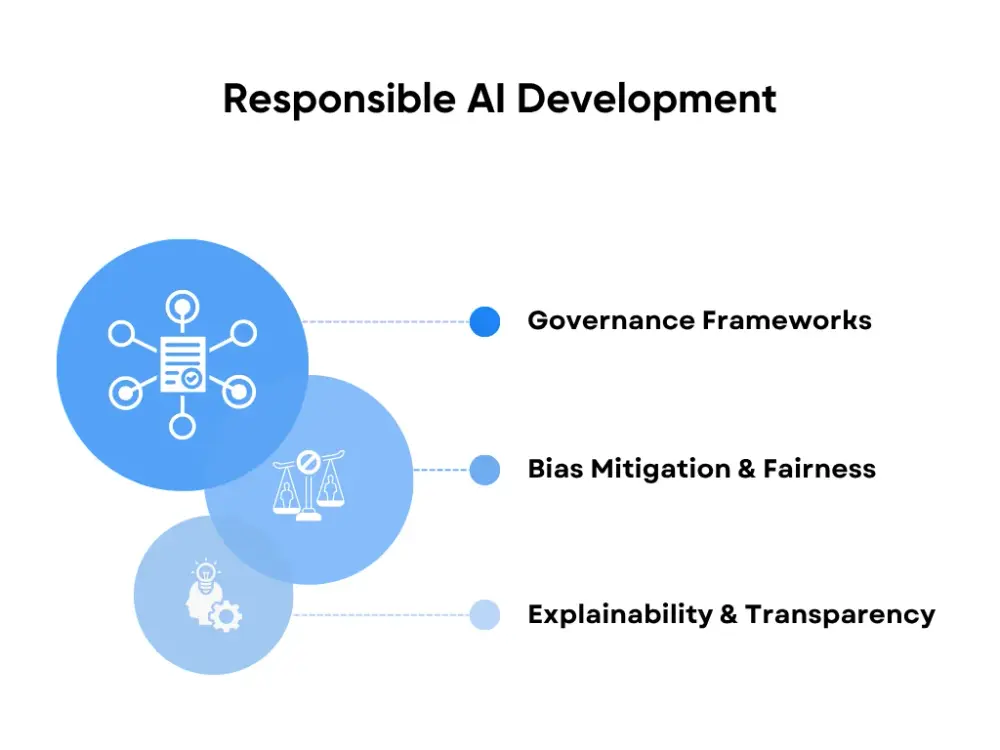
In addition to environmental sustainability, responsible AI Development encompasses several other key areas: fairness and bias prevention, transparency and explainability, privacy protection, etc.
AI safety has evolved from voluntary best practices to systematic frameworks that align with real regulations and business policies. Companies are finding that good safety practices actually reduce legal risk, build customer trust, and let them deploy AI in heavily regulated industries like healthcare and finance.
Microsoft
Microsoft has integrated responsible AI practices directly into its product development lifecycle. The company developed the Explainability Boosting Machine (EBM) algorithm to prevent AI bias by producing interpretable explanations. Supported by automated bias detection tools and explainability requirements, Microsoft systems provide transparent explanations for AI decisions in various use cases.
For example, when an AI system denies a loan or flags a transaction, it provides clear reasoning that both regulators and customers can understand. Their approach typically costs 10-15% of development budgets, which they view as minimal compared to potential safety failures or regulatory violations.
Stanford
Stanford's HAI (Human-Centered AI) has created HELM Safety v1.0, which tests 24 major models across violence, fraud, discrimination, and other harmful content. In their latest evaluation, Claude 3.5 Sonnet ranked highest overall, demonstrating how comprehensive evaluation helps companies understand exactly how their AI systems behave before deploying them in critical business applications.
Stanford's framework turns compliance from a burden into a competitive edge by providing systematic safety structures that companies can adopt. Their research shows that even top models still have significant gaps in automated decision-making, highlighting why human intelligence and robust safety frameworks remain crucial.
OpenAI
OpenAI has pioneered the development of safety frameworks that balance innovation with risk mitigation. They engaged over 50 experts from domains such as AI alignment risks, cybersecurity, and international security to adversarially test GPT-4 over six months before release. Their red teaming practices, where external experts attempt to break or misuse their models, have become industry standard.
OpenAI's approach includes constitutional AI principles, iterative deployment strategies, and extensive documentation of model capabilities and limitations. They've created dedicated safety teams that test models at different stages of training and implement mitigations for identified risks, setting industry standards for responsible AI development despite recent concerns about shortened testing periods for newer models.
AI's Role in Scientific Breakthroughs
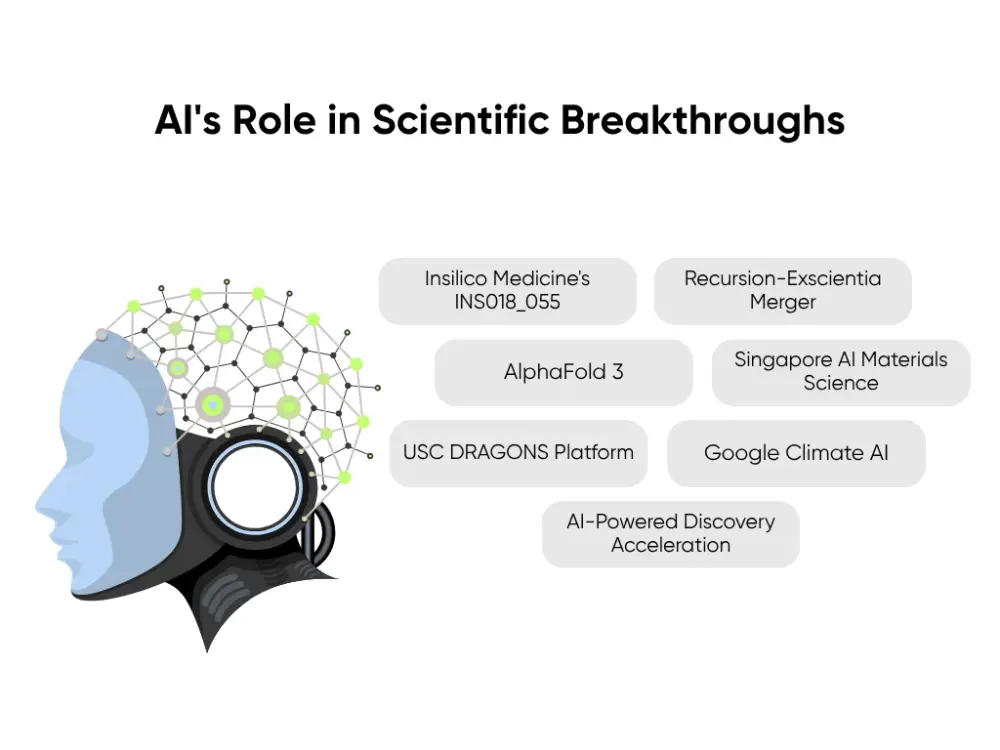
AI's transformation of scientific discovery has moved from accelerating existing research methods to enabling entirely new categories of investigation and hypothesis generation. AI research is fundamentally redefining how R&D is conducted across disciplines, from healthcare to materials science and beyond.
Healthcare and Drug Discovery
AI is revolutionizing medical research by dramatically reducing the time and cost of drug development. With the help of improved data science approaches, AI is enabling precision treatments previously impossible with traditional methods.
- Insilico Medicine's INS018_055: First fully AI-discovered and AI-designed drug to reach Phase II clinical trials for idiopathic pulmonary fibrosis, reducing timeline from 10-15 years to under 30 months
- Recursion-Exscientia Merger: Created the largest AI drug discovery platform with 10+ clinical/preclinical programs. With cutting-edge image processing, Recursion-Exscientia can handle 2.2 million experiments weekly using 8 billion microscopy images
- AlphaFold 3: Achieved 50% improvement over existing protein interaction prediction methods, earning the 2024 Nobel Prize in Chemistry with 4,000+ citations, enabling malaria vaccine and cancer research breakthroughs
Materials Science and Engineering
AI is accelerating the development of advanced materials by simulating complex chemical behaviors and exploring vast composition spaces. Even in premier academic institutions with powerful computers, these would take decades to investigate manually.
- Singapore AI Materials Science: Simulates chemical behaviors at unprecedented speed, cutting years off research timelines for developing materials with specific properties
- USC DRAGONS Platform: Backed by $2 million NSF funding, designs futuristic superalloys for aerospace and energy applications by exploring composition spaces
- AI-Powered Discovery Acceleration: Enables high-throughput hypothesis testing impossible with traditional methods, generating insights through pattern recognition across vast datasets
Climate and Environmental Science
AI is transforming our understanding of climate systems and weather patterns, enabling more accurate predictions and faster iteration on climate intervention strategies.
- Google Climate AI: GenCast and NeuralGCM revolutionize weather prediction, with NeuralGCM simulating 70,000 days of atmosphere in the time traditional models simulate 19 days
- Predictive Climate Modeling: AI systems enable more detailed climate modeling, better extreme weather prediction, and faster development of climate intervention strategies
AI Trends in the Public Sector
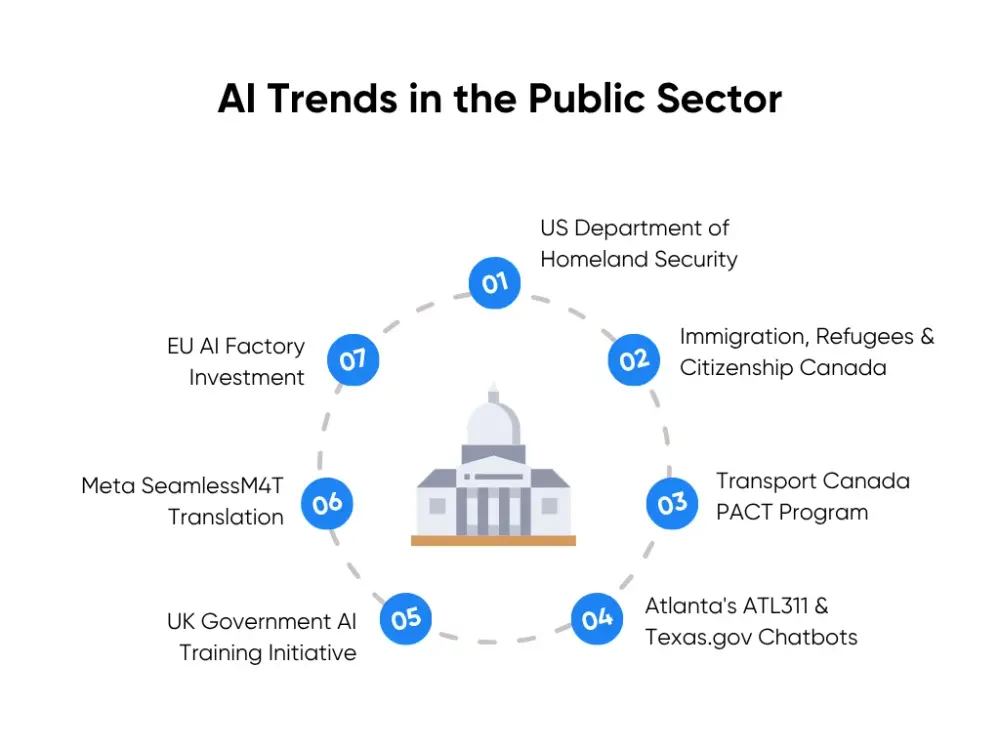
Government AI adoption has accelerated dramatically in 2025, driven by measurable efficiency gains in delivering meaningful social impact. The citizen services artificial intelligence market size is projected to reach $473.25 billion by 2034, up from $13.65 billion in 2024. This is a staggering 42.56% compound annual growth rate.
Governments worldwide are implementing AI solutions that deliver substantial operational improvements and citizen service enhancements:
- US Department of Homeland Security: DHSChat serves 19,000 employees while implementing AI for cybersecurity, border security, and disaster response operations
- Immigration, Refugees and Citizenship Canada: Processed over 7 million routine cases using AI-based triaging models, freeing human officers for complex judgment-requiring cases
- Transport Canada PACT Program: Achieved 10X increase in cargo screening throughput while expanding coverage from 6% to 100% of flights
- Atlanta's ATL311 and Texas.gov Chatbots: Handle city service requests and FAQ responses, with Haryana India's "Sarathi" chatbot enabling direct government document access
- UK Government AI Training Initiative: Partnership with Google Cloud to train 100,000 civil servants with AI skills by 2030, plus MOU with Anthropic for enhanced public services
- Meta SeamlessM4T Translation: Supports speech-to-speech, speech-to-text, text-to-speech, and text-to-text translations for up to 100 languages in government services
- EU AI Factory Investment: €2.1 billion in seven consortia building AI-optimized supercomputers supporting multilingual services across member states
Conclusion
The AI trends of 2025 further affirm its status as the most transformative technology of the coming decades, if not this century. Organizations leveraging AI strategically achieve measurable competitive advantages, from 56% faster development cycles to 50% efficiency improvements across business functions.
Embrace the reality that ethical oversight cannot be an afterthought but must be integrated into every stage of AI adoption, from initial strategy development through deployment and ongoing operations. You need governance frameworks that ensure AI systems serve human values while delivering business results, creating accountability mechanisms that prevent harmful outcomes, and establishing clear guidelines for AI use in sensitive applications.
Success requires strategic thinking about sustainability, safety, and scalable implementation of AI. At Aloa, we'll help you build custom AI solutions that are both innovative and responsible. Whether your emphasis is workflow automation, intelligent CRM, or specialized tech like computer vision, we’ll develop scalable solutions that integrate with your existing systems without a hitch. Schedule a consultation today, and let’s start transforming these AI trends into your best competitive advantage.
FAQs
What are the top AI trends to watch in 2025?
The most significant AI trends in 2025 include more capable AI models with advanced reasoning abilities, autonomous AI agents transforming workflows, ubiquitous productivity tool integration, sustainable AI infrastructure, responsible development frameworks, scientific breakthrough acceleration, and widespread government AI adoption.
How will AI agents impact business processes?
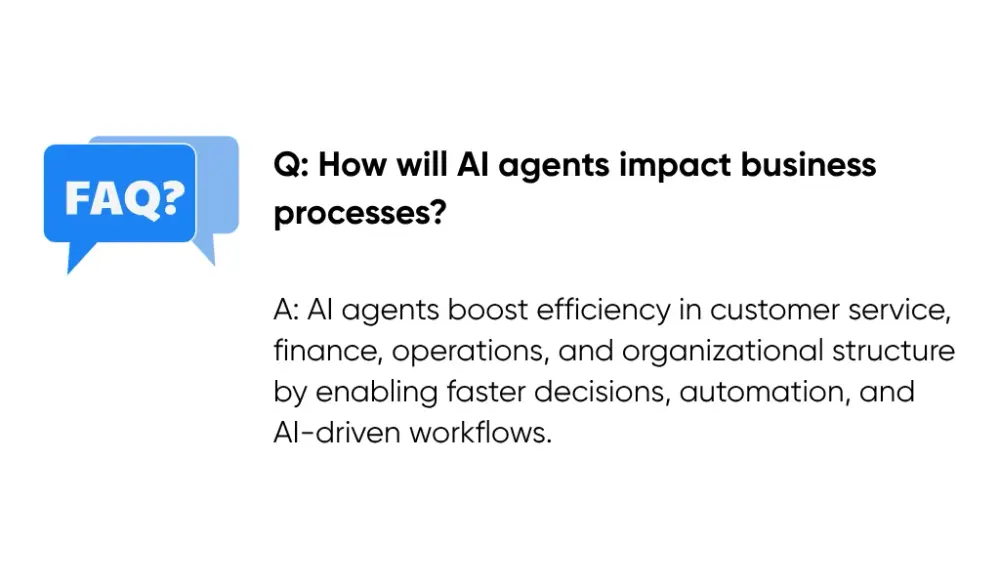
AI agents are transforming business operations across multiple areas:
- Customer service: 50% efficiency improvements and 14% better issue resolution rates
- Finance: Help businesses collect payments 5 days faster with 10% higher collection rates
- Internal operations: Automate workflow orchestration, scheduling conflicts, and procurement processes
- Organizational structure: Shift from human-centric workflows with AI assistance to AI-centric workflows with strategic human oversight
What role does AI play in sustainability?
AI is providing solutions through carbon-aware computing that automatically schedules tasks during periods of cleaner energy availability. Intelligent tasking systems can shift workloads to regions with more renewable energy sources and route computing tasks to environmentally optimized nodes. Additionally, AI assists with implementing sustainable coding practices through optimized algorithms and data structures that reduce overall energy consumption.
How is responsible AI development being ensured?
Responsible AI development is being pursued through technical safeguards like alignment training and safety evaluations, or emerging government regulations like the EU AI Act. Industry coordination efforts allow vendors to share safety standards, particularly when it comes to preserving intellectual property.
However, significant challenges remain in balancing rapid innovation with adequate safety measures and achieving effective standards and oversight.
What are examples of scientific breakthroughs driven by AI?
AI-driven scientific breakthroughs include the first fully AI-discovered drug reaching Phase II trials and a 50% improvement in predicting how proteins interact with each other, which has critical disease and drug research applications. In climate science, Google’s NeuralGCM AI can simulate thousands of days of atmosphere in mere minutes, up from only 19 simulated days over several hours. This enables thousands of climate simulations for extreme weather events, all from an average consumer-grade laptop.
How is AI transforming government and the public sector?
AI is enabling more advanced applications across the public sector, such as automating immigration case processing, providing instant policy guidance to thousands of employees, and delivering personalized citizen services at scale. These systems process millions of applications annually, answer complex regulatory questions in seconds, and reduce wait times from weeks to hours.